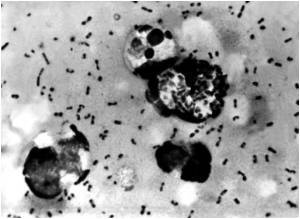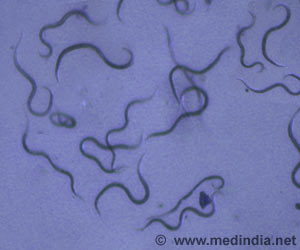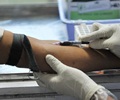
‘An inherited genetic variant CCR5-delta 32 that protects against HIV might also help prevent injury from Hepatitis C and other liver diseases.’
Tweet it Now
Sherman, also director of the Division of Digestive Diseases in the UC College of Medicine, recently received a $2 million grant from the National Institutes of Health to further the research which focuses on ways to inhibit CCR5, a protein that is the main chemokine receptor on the body’s immune cells, also known as T-cells. The grant will be awarded over a four-year period and builds upon a July 2014 study Sherman authored and published in Science Translational Medicine.“It turns out that HIV and its evolution high-jacked that receptor and uses CCR5 as its primary way of binding to T-cells, entering them and killing them. That’s what causes AIDS. CCR5 is not just present on T-cells but also exists in the liver on the surface of hepatocytes and also in the liver on stellate cells. Stellate cells are the cells that produce scar tissue in the liver which can lead to the development of cirrhosis. The focus of this grant is to look at how inhibition of CCR5 might influence the development of liver injury and/or the development of scar or cirrhosis in the liver," explains Sherman.
“An additional question to consider is, ‘How does interfering with CCR5 affect viruses like hepatitis C that might be co-infecting the liver?’” says Sherman. “We know hepatitis C causes liver injury, but is that injury modulated in part through this receptor, which may not be a specific receptor for hepatitis C but is for HIV?”
Medications have been developed to block the CCR5 receptor and Sherman will be examining their effect in clinical populations and conducting lab studies of the meds. Two medications that will be reviewed are Cenicriviroc, an investigational drug currently under study for the treatment of fatty liver, and Maraviroc which is currently approved for treatment of HIV.
Sherman says an aberrant CCR5 protein created by a CCR5-delta 32 gene mutation may be protecting individuals who have been exposed to HIV, but don’t have rapid AIDS progression. Researchers think CCR5-delta 32 mutation is a gene that was selected among Europeans as a result of another great epidemic, Europe’s black plague of the 14th century, explains Sherman.
Advertisement
“Research showed that Europeans and people of European descent who were selected genetically through their ancestors during the plague—the black death of Europe—and they have the CCR5-delta 32 mutation,” says Sherman.
Advertisement
The Black Death hit Europe in the years 1346-53 and was spread by a bacillus called Yersina pestis, which traveled from person to person through inhalation of fine infective droplets or through the bite of infected fleas and rats, according to History.com. The disease followed European trade routes to devastate large populations.
Sherman says his review of hemophiliacs will allow for the comparison of fibrosis or liver scarring, examining those that have the CCR5-delta 32 mutation versus those who don’t.
“We are using a very special group of patients, a long-term longitudinal cohort called the Multicenter Hemophilia Cohort Study,” “It was a study started in the early days of the HIV epidemic. It looked at outcomes of patients with hemophilia, many of whom developed HIV and hepatitis because of blood contamination. We have obtained samples from thousands of those patients and are studying differential outcomes in terms of liver disease to determine if CCR5-delta 32 mutation provided protection in those patients,” he says.
“If over the next few years, we can show that CCR5 blockade protects HIV-infected people from liver disease, then we may change the entire treatment paradigm of HIV and make this part of the routine treatment of many or most patients,” says Sherman.
Source-Newswise















